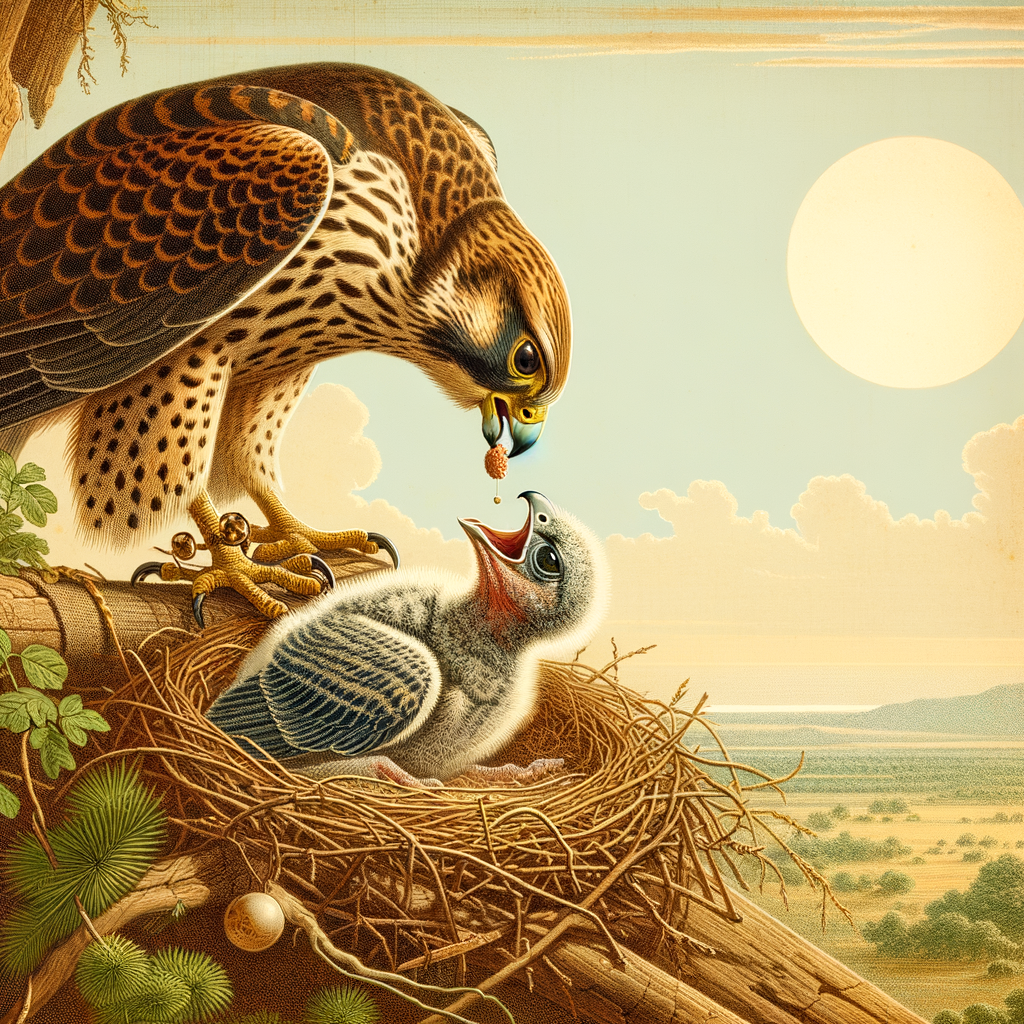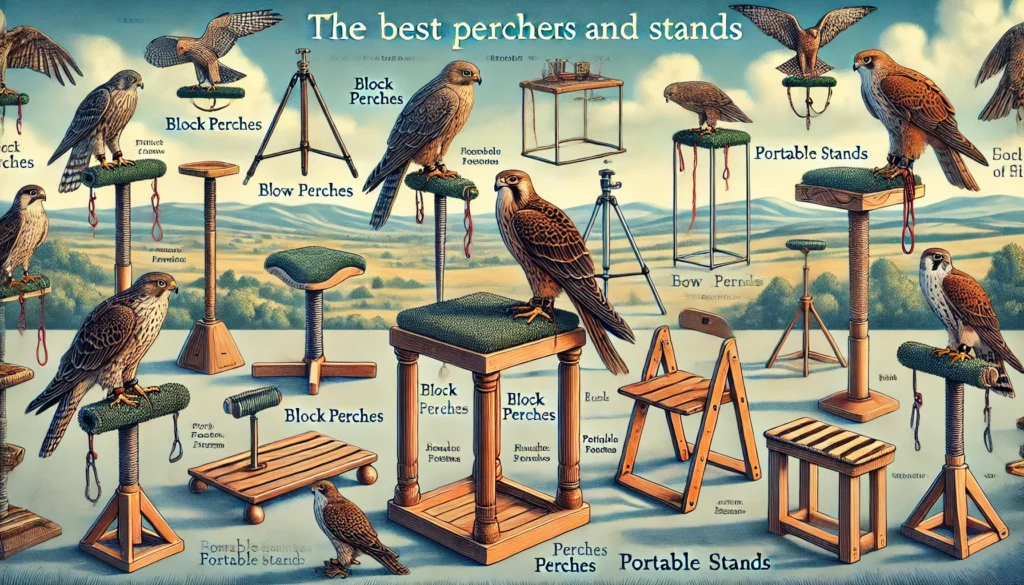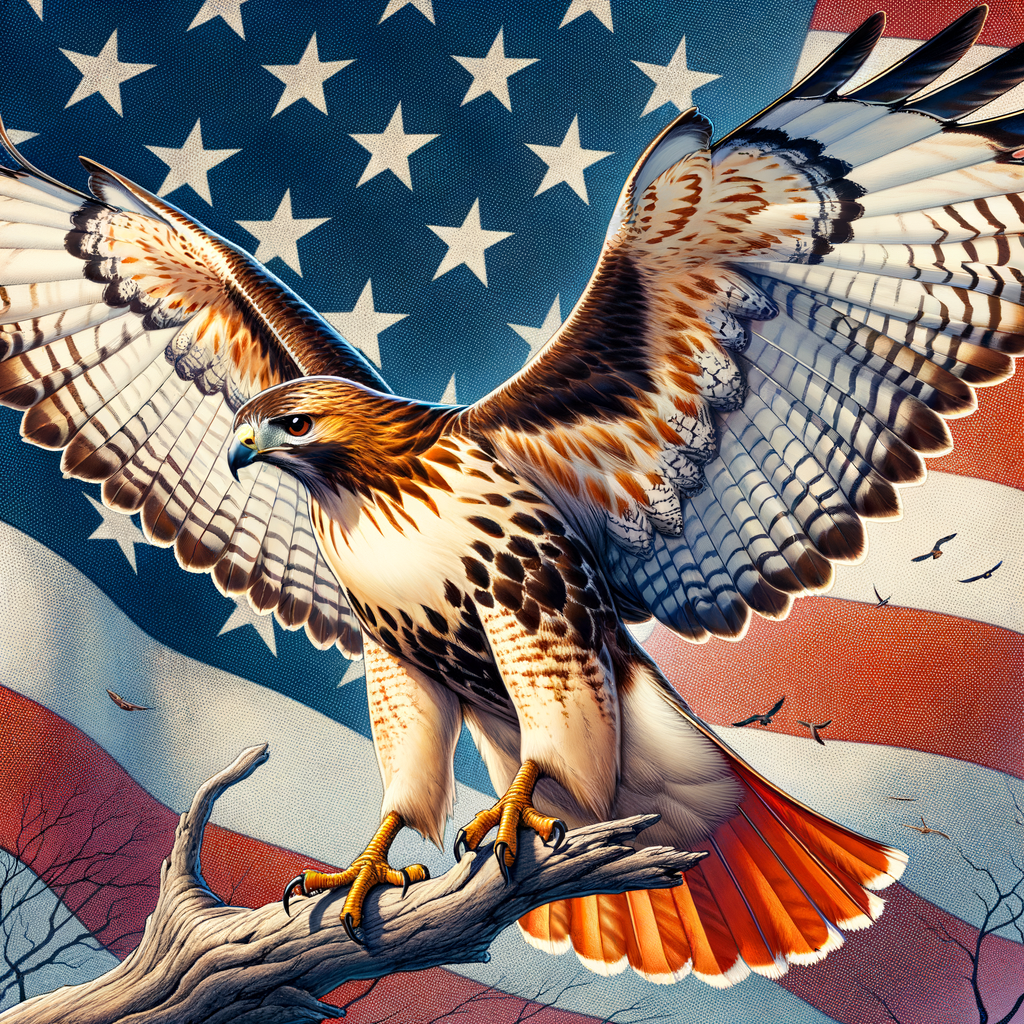Essential Tips for Feeding Your First Falcon
- Understand Your Falcon’s Diet: Falcons primarily eat small mammals and birds. Providing a natural diet helps keep them healthy.
- Proper Food Preparation: Ensure the food is clean, fresh, and cut into manageable pieces.
- Maintain Hygiene: Clean feeding areas and equipment to prevent infections.
- Portion Control: Feed your falcon the correct amount of food to avoid overfeeding or underfeeding.
- Feeding Schedule: Stick to a regular feeding schedule to maintain your falcon’s health and routine.
- Monitor Health: Watch for changes in eating habits or weight as indicators of potential health issues.
- Training and Feeding: Use feeding time to strengthen training and bonding with your falcon.
The Importance of Feeding-First for Your Falcon: An Irish Tale
Here at Learn Falconry, we understand the special bond between a falconer and their bird. Just as breakfast is the most important meal of the day for us, it’s crucial for your feathered friend too! This article delves into why a nutritious and timely meal can make all the difference in your falcon’s performance and well-being.
Keep reading to discover how feeding-first can transform your falcon’s health and skills, setting them up for a soaring success just like a well-fed traveler enjoying the breath-taking Irish countryside!
Beginner Guide to Feeding Your First Falcon
Understanding the diet of falcons is essential for any newcomer to the world of falconry. Feeding your first falcon correctly is critical not only for their health but also for establishing a strong bond. This guide will cover everything you need to know about falcon feeding and will answer the important question: What do falcons eat in the wild? By the end, you’ll have a thorough grasp of the beginner falcon diet and the best practices for feeding falcons.
What Do Falcons Eat in the Wild?
In their natural habitat, falcons are highly skilled hunters. They primarily consume a variety of live prey such as small birds, rodents, insects, and even fish in some cases. This diet is rich in protein, which is crucial for their high energy needs. Learning more about the diet of your specific falcon species will also help; you can explore more about different species here.
Beginner Falcon Diet
When you start falconry, providing a diet that mimics what falcons would eat in the wild is essential. A balanced diet typically includes:
- Small Birds: Pigeons and quails are popular choices.
- Rodents: Mice and rats are reliable sources of protein.
- Insects: Some smaller falcon species enjoy a diet of insects.
Transitioning your falcon from a wild diet to one you can provide at home requires careful planning and attention to detail. You might also find resources on basic falconry equipment useful.
Feeding Techniques for Falcons
Proper feeding practices can significantly impact your falcon’s health and behavior. Here are some key tips for feeding falcons:
- Regular Feeding Times: Falcons thrive on routine, so establish a consistent feeding schedule.
- Weighing Food: To ensure your falcon gets the right amount of food, use accurate scales.
- Health Checks: Regular health checks will help you adjust the diet as needed for weight management and overall health. You can read more about falcon health here.
Feeding Equipment and Safety
Having the right equipment will make feeding your falcon easier and safer. Essential items include food preparation tools, scales for portioning, and safe perches or feeding stations. For a comprehensive list of equipment, visit our falconry equipment section.
Falcon Health and Nutrition
Maintaining a well-rounded diet for your falcon is crucial. Not only does it affect their performance and well-being, but it also supports their immune system, feather quality, and overall vitality. Regular check-ups with an avian veterinarian can help monitor for any nutritional deficiencies. Dive deeper into the specifics of falcon health here.
By understanding the dietary needs of falcons, you can ensure your feathered companion remains healthy and vibrant. Whether you are a novice or looking to refine your techniques, knowing What do falcons eat in the wild? and translating that into a structured feeding routine will set you on the right path.
Want to learn more about starting your journey in falconry? Check out our comprehensive guide for falconry beginners.
Feeding the First Falcon
Falcons, particularly Peregrine Falcons, have a unique and fascinating diet. Understanding their feeding habits provides insight into how these magnificent birds thrive in various environments.
Prey Items
Peregrine Falcons primarily consume:
- Pigeons: Common in urban areas, they are a Staple for Peregrines.
- Songbirds: A variety of species fall prey to these skilled hunters.
- Waterfowl: Ducks and shorebirds are part of their coastal diet.
- Seabirds: Coastal Peregrines frequently hunt seabirds.
- Other Birds: Includes species like golden plover, red grouse, and Arctic terns.
Small Mammals and Other Prey
While birds constitute the majority of their diet, Peregrine Falcons also hunt:
- Mammals: Occasionally capture bats, rats, voles, and rabbits.
- Insects and Reptiles: Less commonly, these are also part of their diet.
Food Distribution and Parental Care
- Chick Feeding: Parent falcons are observed feeding their chicks equally, ensuring minimal competition among siblings.
- Fledglings: Young falcons continue to receive food from their parents up to six weeks post-nesting.
Diet and Breeding Health
A well-balanced diet is crucial for the Peregrine Falcons’ health, crucial for their strength during the breeding season. Variability in diet based on regional prey availability helps maintain their population across diverse habitats.
Adaptability in Diet
Falcons demonstrate adaptability by:
- Feeding in Burned Areas: Shows their ability to change diet based on environmental conditions.
- Regional Differences: For instance, in the UK, they have been recorded eating feral pigeons and parakeets.
Prey Weight and Grouping
Long-term observations reveal:
- Mean Prey Weight Changes: Over years, fluctuations in average prey weight have been noted.
- Prey Group Adjustments: Adult pairs vary their prey choices based on availability.
Table: Common Prey of Peregrine Falcons
| Prey Type | Examples |
|---|---|
| Birds | Pigeons, starlings, songbirds |
| Waterfowl | Ducks, shorebirds |
| Seabirds | Coastal birds |
| Small Mammals | Bats, rats, voles, rabbits |
| Insects/Reptiles | Various small species |
Graph: Prey Diversity Over Time
The graph below showcases the diversity of prey over the years, based on long-term research:

By examining the diet and feeding behaviors of Peregrine Falcons, we gain a deeper understanding of their adaptability and survival strategies.
Key Takeaways on Peregrine Falcon Feeding Habits
Understanding the feeding habits of Peregrine Falcons is crucial for appreciating these incredible birds. In 2024, we see that their diet mainly consists of pigeons, songbirds, and other flying birds. These falcons are expert hunters, whether snatching prey out of the sky or adapting their diet based on the environment they find themselves in, like urban areas or coastal regions.
Interesting facts include:
- Parental Care: Falcon chicks are well taken care of, with parents distributing food equally to reduce competition among siblings.
- Adaptability: Peregrine Falcons have been noted to hunt in various environments, even feeding in burned areas.
- Diet Diversity: Besides birds, they sometimes hunt small mammals like bats and rabbits and occasionally consume insects and reptiles.
These insights help us admire the Peregrine Falcon’s adaptability and intricate feeding behaviors. Whether you’re a budding falconer or a bird enthusiast, diving into the dietary habits of these raptors offers a deeper appreciation of their survival tactics and role in the ecosystem. Happy bird watching with Learn Falconry!



